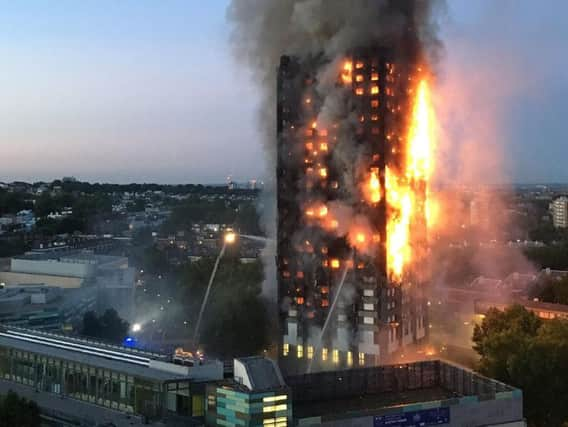Grenfell-type cladding still allowed on Scottish buildings


New regulations, which came into force today, still allow the flammable material to be used because it passes the discredited British Standard test 8414 and despite a ban on the use of the cladding in England and Wales.
Seventy two people died and more than 70 were injured when fire took hold of the Grenfell tower block in June 2017, with the blaze spreading rapidly because of the building’s outer covering.
Advertisement
Hide AdAdvertisement
Hide AdDuring the public inquiry, the combustible material on the exterior of the building was criticised by experts, including the Association of British Insurers which said the BS 8414 test used to test the safety of the cladding was “utterly inadequate” as it under-estimated the ferocity and spread of real blazes.
The ABI also alleged some manufacturers had “gamed” the tests by reinforcing their systems in the laboratory in a way that would not happen in reality, for example using rivets to stop flaming panels falling off as happened at Grenfell.
Last year the Scottish Government said new fire safety measures for high rise buildings would be introduced, including improving evacuation from high rises, and making sprinkler systems mandatory in all new-build flats.
But today amendments to the Scottish Building Standards Technical Handbook, made by the Scottish Government, failed to remove the BS 8414 test as a measure of safety for cladding.
Scottish Conservative housing spokesman Graham Simpson said: “I welcome a number of the steps taken by the Scottish Government on fire safety, including additional requirements for escape routes and sprinklers. However, I am deeply concerned and disappointed that the Scottish Government has confirmed it will retain BS 8414 as an option for compliance.
"The retention of this flawed testing route undermines these positive steps by continuing to permit combustible materials on to our buildings in Scotland.
“The simple solution is to join England and Wales and simply ban the products from being used on these buildings. People have the right to expect that the buildings they live and work in are safe.
“In light of the mounting expert criticism, there is serious doubt as to whether this test is robust enough to reflect real-life conditions. A safer alternative exists, and that’s one we should be following.”
Advertisement
Hide AdAdvertisement
Hide AdHousing Minister Kevin Stewart said: “Retaining the option to test cladding systems was recommended by our review panel of fire experts. We will also consider the findings of the current review of the BS 8414 test methodology by the relevant British Standards Institution committee, which is both expert and independent of government.
“The new guidance will improve safety in new high-rise buildings and lowered the height at which these standards must be met from 18m to 11m. "We have also introduced tighter controls over the combustibility of cladding systems in hospitals, residential care buildings and public buildings regardless of the building height.”